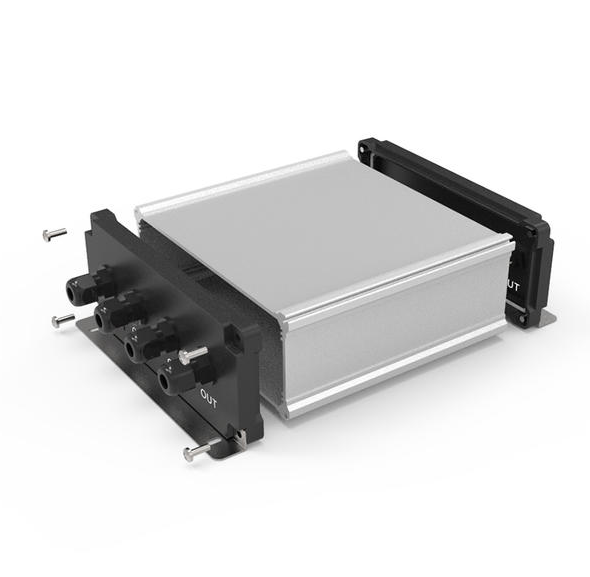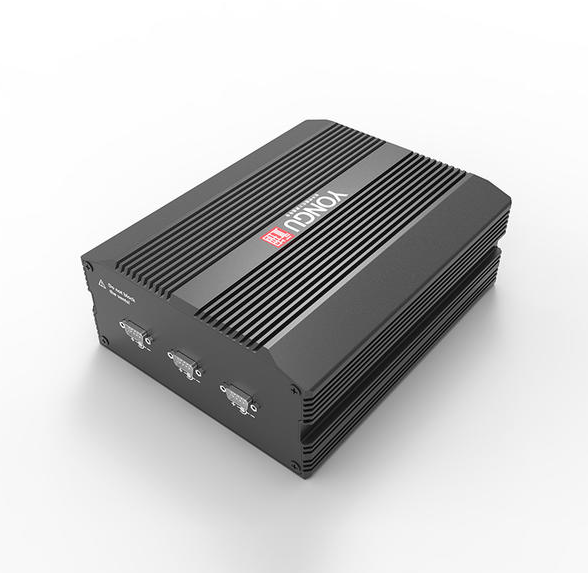Electrical boxes are the unsung heroes of electrical installations, safeguarding connections and ensuring the safety and functionality of our electrical systems.
Choosing the right electrical box is crucial, as it impacts the integrity of the entire wiring setup while ensuring compliance with safety standards. However, how can I get the right electrical boxes? In this post, the author would guide you to choose the right electrical boxes.
Choosing the right electrical box is crucial, as it impacts the integrity of the entire wiring setup while ensuring compliance with safety standards. However, how can I get the right electrical boxes? In this post, the author would guide you to choose the right electrical boxes.
Size and Capacity
The size of an electrical box is critical for accommodating the wires and devices. A box that's too small for the intended purpose can lead to overcrowding, risking wire damage, overheating, and potential electrical hazards. It's essential to calculate the space required for wires, switches, receptacles, or any other devices that will be installed within the box. Adhering to electrical codes that specify the minimum size for different applications ensures safety and proper functionality.
Material and Environment
The choice between metal and plastic boxes is largely influenced by the installation environment. Metal boxes, typically made of steel or aluminum, excel in durability and are well-suited for outdoor or high-traffic areas. They provide excellent grounding and can withstand harsh conditions, making them ideal for areas prone to moisture or physical damage.
On the other hand, plastic boxes, crafted from PVC or other non-conductive materials, are lightweight and suitable for dry indoor spaces where corrosion or moisture isn’t a concern. Assessing the environment where the box will be installed helps in selecting the most appropriate material for longevity and safety.
On the other hand, plastic boxes, crafted from PVC or other non-conductive materials, are lightweight and suitable for dry indoor spaces where corrosion or moisture isn’t a concern. Assessing the environment where the box will be installed helps in selecting the most appropriate material for longevity and safety.
Mounting and Installation
Understanding the different mounting options—surface-mounted, flush-mounted, or free-standing—impacts the installation process and accessibility. Surface-mounted boxes are affixed to the surface of walls or ceilings, providing easy access but might be visually less appealing.
Flush-mounted boxes sit level with the wall, offering a neater appearance but may require more effort for installation as they need to be recessed into the wall. Free-standing boxes are versatile, allowing placement anywhere in a room, ideal for certain unique applications. Selecting the mounting method depends on aesthetics, accessibility, and the specific requirements of the installation.
Flush-mounted boxes sit level with the wall, offering a neater appearance but may require more effort for installation as they need to be recessed into the wall. Free-standing boxes are versatile, allowing placement anywhere in a room, ideal for certain unique applications. Selecting the mounting method depends on aesthetics, accessibility, and the specific requirements of the installation.
Regulatory Compliance
Compliance with local electrical codes and regulations is paramount when selecting an electrical box. These codes dictate the standards for safety, wiring practices, box size, material requirements, and more. Adhering to these guidelines ensures that the electrical installation meets safety standards and minimizes potential hazards. Failure to comply with these regulations can result in safety risks, legal issues, and difficulties during inspections or when selling a property. Always verify that the chosen electrical box meets or exceeds the stipulated standards for the intended installation location.
Step-by-Step to Select the Right Electrical Box
In this post, the author would guide you to select the right electrical box step by step.
●Assessing Electrical Needs
Begin by thoroughly assessing the electrical requirements for your installation.
This involves counting and estimating the number of wires, switches, outlets, or any other electrical components that will be integrated into the system. Accurately evaluating these needs is crucial as it directly impacts the size and type of electrical box required.
This involves counting and estimating the number of wires, switches, outlets, or any other electrical components that will be integrated into the system. Accurately evaluating these needs is crucial as it directly impacts the size and type of electrical box required.
●Choosing the Material
Selecting the appropriate material for the electrical box is largely influenced by the environment where it will be installed.
Metal boxes, typically made of steel or aluminum, offer durability and strength, making them suitable for outdoor areas or locations prone to physical damage.
Plastic boxes, constructed from non-conductive materials like PVC, are lighter and better suited for dry indoor environments where moisture or corrosion isn't a concern.
Metal boxes, typically made of steel or aluminum, offer durability and strength, making them suitable for outdoor areas or locations prone to physical damage.
Plastic boxes, constructed from non-conductive materials like PVC, are lighter and better suited for dry indoor environments where moisture or corrosion isn't a concern.
●Sizing the Box
Referencing electrical codes is essential when determining the right size for the electrical box. These codes specify the minimum size requirements based on the number and size of wires, switches, or outlets to be housed within the box.
Overcrowding the box can lead to heat build-up, potentially causing safety hazards. Choosing a box with ample space to comfortably accommodate the wires and devices while adhering to code requirements is crucial for safety and proper functionality.
Overcrowding the box can lead to heat build-up, potentially causing safety hazards. Choosing a box with ample space to comfortably accommodate the wires and devices while adhering to code requirements is crucial for safety and proper functionality.
●Considering Special Features
In certain scenarios, such as outdoor installations or unique circumstances, standard electrical boxes might not suffice. Weatherproof or specialty boxes are specifically designed to cater to these needs.
Weatherproof boxes shield connections from moisture and external elements, ensuring longevity and safety in outdoor settings.
Specialty boxes, designed for specific applications like low-voltage systems or complex wiring configurations, offer specialized features to accommodate these unique requirements.
Weatherproof boxes shield connections from moisture and external elements, ensuring longevity and safety in outdoor settings.
Specialty boxes, designed for specific applications like low-voltage systems or complex wiring configurations, offer specialized features to accommodate these unique requirements.
●Checking Compatibility
Before finalizing the selection, ensure that the chosen electrical box is compatible with the wiring and fixtures intended for installation. Verify that the box supports the voltage and amperage requirements of the electrical system. Compatibility issues can lead to inefficiencies, malfunctions, or safety risks within the electrical setup.
Conclusion
Choosing the right electrical box involves a combination of considerations—size, material, environment, and compliance with safety regulations. Prioritizing safety and functionality ensures a reliable electrical system that operates efficiently while mitigating potential risks.
By making informed choices and following proper installation procedures, homeowners and electricians alike can ensure a secure and compliant electrical setup.
By making informed choices and following proper installation procedures, homeowners and electricians alike can ensure a secure and compliant electrical setup.






